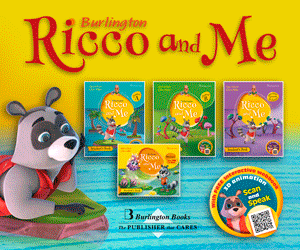There are three considerations when addressing Internet safety with these students. First, the transfer of handling strangers in "real life" to those in virtual environments is not automatic. It needs to be taught. Second, while most "Stranger Danger" programs teach that strangers are scary, mean and want to hurt or abduct children, this contradicts the way collaboration occurs between strangers online. Not all strangers are dangerous. Lastly, in "real life," students can walk or run away from a potential threat. In an online environment, the danger is inside a student's home and hard to escape without the necessary skills for handling tough situations.
This is a lesson that I have done with my kindergarten and first grade students to introduce the idea that strangers exist on the Internet and to discuss how we should interact with them.
Protecting Private Information Online
Materials
- Projector
- Computer
- Internet access
Introduction
(If a projector and/or interactive whiteboard is available, these questions can be projected on a screen during the discussion.)
- Ask, "What is a stranger?" After soliciting various answers, ensure that students understand that a stranger is someone we don't know. Remind students that some strangers may want to hurt students, but not all strangers are bad people. You can give an example of a stranger who opens a door for you or picks up something you may have dropped and returns it to you.
- Ask, "What kinds of things should we not tell a stranger?" Solicit a variety of answers, ensuring that things like "address," "phone number," "full name" are mentioned.
- Ask, "What kinds of things are OK to tell a stranger?" This question tends to be harder for students to answer. You may get answers like "Hi" or "How are you?" If students are stumped, have them vote with their thumbs about various things like "your favorite color" or "your favorite ice cream flavor." Explain that certain kinds of information won't put students in harm's way.
- Ask, "Are there strangers online?" Some students may have played games online before and may offer answers related to those experiences. I've had students as young as kindergarten say that they think there are strangers online because you don't always know who you are talking to online. After a brief discussion of different ways we can connect with strangers online (this can also include game systems), explain that students will be watching a video to learn more about how to handle strangers online.
Video
Have students watch the Internet Safety video at BrainPop, Jr.
Discussion
After the video, ask students to share what they learned from the movie. After soliciting some answers, review vocabulary from the video using the "Word Wall" activity on the site. Then, to wrap up the discussion, complete the "Write About It" activity.
Assessment
Print out one of the quizzes (Easy or Hard, depending on your students) to assess what students have learned.
Next Steps
Have students create an Internet Safety poster using a drawing program like TuxPaint. Have students act out scenarios to practice handling strangers online.
More resources
- The National Criminal Justice Reference Service
- Common Sense Media
- Wired Safety
- Disney's Parent Guide to Internet Safety
- iSafe
- NetSmartz
Mary Beth Hertz (@mbteach on Twitter) is an elementary computer teacher in Philadelphia, PA and a regular blogger on Edutopia.
"Originally published ( 04/6/12 ) © Edutopia.org; The George Lucas Educational Foundation."




